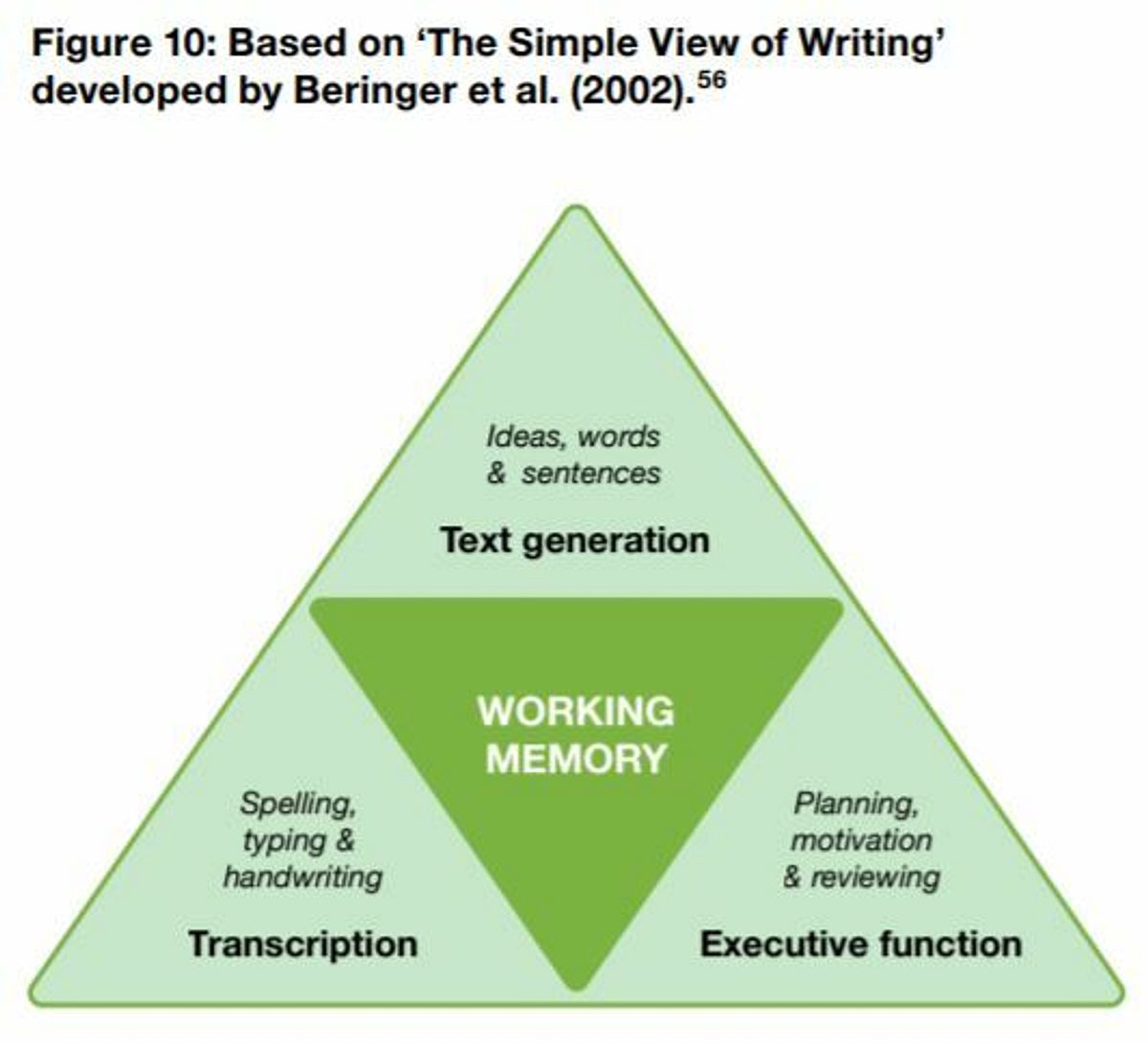
Blog -
Supporting young children’s emotional learning behaviours
David Windle discusses putting the SEL Guidance into practice in nursery-aged children

Share on:

by London South Research School
on the
Writing is by no means easy. Not only is it difficult for children and young people in school, it remains difficult into adulthood.In some ways, mastering the craft of writing is akin to mastering a musical instrument. Whereas a musician needs to both understand the music and the sound and be able to play all the notes in the right order, a writer needs to understand the ideas and be able to summon the words needed to express them, arranged in the right order.
The Simple View of Writing
In the EEF’s recently updated Improving Literacy in KS2,“The Simple View of Writing” shows that writing poses a great challenge for the working memory.

A person’s working memory coordinates and handles the writing process at the moment of writing but, as we know, the working memory has a finite capacity and can easily become overwhelmed. If, for example, a child is struggling with holding their pen and letter formation, then they will not have the capacity to compose great poetry. Equally, if a child is engaged in generating ideas for a story, they may not have the capacity to organise these ideas in a plan at the same time. So, how can we, as teachers, support our pupils to undertake this incredibly complex process? Why write? Firstly, children have to be motivated to write. Often, this motivation comes when children have ideas which they want to express and a reason to express them. This may all sound incredibly obvious, but I think it is worth restating. If the text or topic is engaging and if children are given time to explore it through listening, drama, talk and debate, or similar, then most will be motivated to write. They will have things to say. If, on top of this, children have a reason to write and an audience to write for, then this motivation may well increase. The key is to capture these ideas as a class, or in note books, so that children can return to them later, thereby freeing up the working memory from having to alight upon inspiration when they are trying to write.
The Writing Process
Once ideas have been generated, the next step is, of course, to put them on paper. The Improving Literacy in KS2 guidance breaks the writing process into 5 clear steps, each of which needs to be structured and taught if children are to master the craft of writing.

By the end of Key Stage 2, children will need to have some automaticity in using these steps so that they free up space in their working memory to remain focused and coherent during the act of writing. The first step is to ensure that the children understand the type of text they are writing. Most primary age pupils will not have wholly internalised models of, for example, a fairy story, a newspaper article or a biography. And so, sharing models and examples with them before they have to write their own is likely to be valuable .Once pupils understand the text structure, this can be used as a scaffold to plan their own version. Tools such as this are essential for reducing the load on the working memory, both at the time of planning and for referring back to when writing. Harking back to our musical instrument analogy, the plan is a little like the sheet music – it is that which will be played in the creative moment.
Following this, before drafting can occur, children likely need support with some valuable vocabulary to work with – each word is like a note to be played when they come to write. The explicit teaching and gathering of vocabulary, between planning and drafting, is a useful support for pupils. Later, all this pre-taught vocabulary can form word banks to support the moment of writing .Of course, words need to be used in sentences. The well-crafted sentence is the key! Practicing sentences compares to practicing scales, chords or melodies – these are the fragments which will make up the overall composition. Before children write their first draft, they will need to be taught sentence structures to use and to play with .Once the piece is planned (the music written); valuable vocabulary is explored (the notes understood) and the sentences are practised (the scales are mastered), then the writing can begin. When it works well in the classroom, it is like music to our ears.

Blog -
David Windle discusses putting the SEL Guidance into practice in nursery-aged children

Blog -
How children learned to stop worrying and love the planet

Blog -
David Windle explores the potential of a focus on fluency to close the reading gap
This website collects a number of cookies from its users for improving your overall experience of the site.Read more